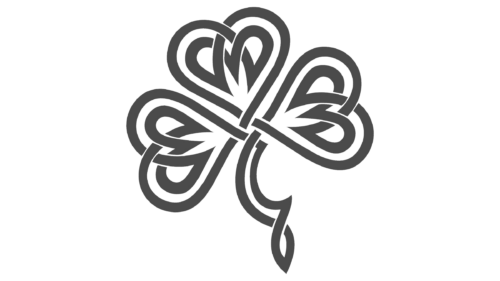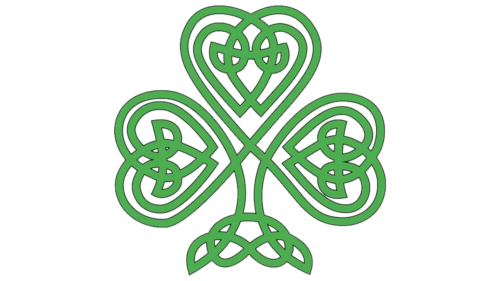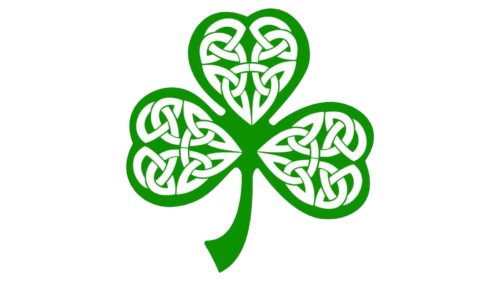The mystique of Celtic symbols has captivated people for centuries, weaving a rich tapestry of history, culture, and spirituality. Among these symbols, the Triquetra, the Celtic Cross, and the Tree of Life stand out for their profound meanings and widespread recognition. While they each hold significant symbolism in Celtic lore, this article delves deeper into another emblem: the Celtic Shamrock.
Celtic Shamrock, a symbol deeply rooted in Irish heritage and lore, carries a multitude of meanings and uses. Primarily, it is recognized as a symbol of ‘good luck’, a belief that dates back to ancient Druids who saw it as a charm against evil spirits. The shamrock’s three leaves were also used by St. Patrick, the patron saint of Ireland, to illustrate the concept of the Holy Trinity – the Father, the Son, and the Holy Spirit. This dual significance interweaves pagan and Christian beliefs, a common theme in Celtic symbolism.
Historically, the shamrock was a sacred plant to the Druids due to its three-leaf shape, which was symbolic of the number three, immensely important in Celtic tradition. Its presence was also a sign of the rejuvenating power of nature, especially during spring. Today, the shamrock is an emblem of Ireland and is used in various forms, from being a national symbol to appearing in festivals like St. Patrick’s Day, and even in modern fashion and design.
Interestingly, the Celtic Shamrock is not just a symbol of luck and religious metaphor; it also holds a significant place in Irish political history. It was used as a badge of rebellion by the Irish Volunteers in the 18th century, symbolizing defiance against British rule. This adds a layer of complexity to its interpretation, blending national identity with cultural and religious elements.
List of Symbolic Meanings of the Celtic Shamrock:
- Good Luck and Fortune
- The Holy Trinity (in Christian lore)
- The power of nature and rejuvenation
- Irish national identity
- Historical symbol of rebellion and defiance
An intriguing fact about the shamrock is its botanical ambiguity. The term ‘shamrock’ comes from the Irish word ‘seamróg’, which means ‘little clover’. However, there’s ongoing debate about which plant species is the true shamrock. Traditionally, it’s associated with either the white clover (Trifolium repens), the lesser clover (Trifolium dubium), or even the wood sorrel (Oxalis acetosella). This botanical mystery only adds to the charm and allure of the Celtic shamrock.
The Celtic Shamrock is a quintessential example of Celtic symbols meaning transcending mere decorative art. It encapsulates the essence of Celtic identity – a blend of the spiritual, natural, and historical. It’s a testament to the enduring legacy of the Celts, whose symbols continue to fascinate and inspire people worldwide.
Celtic Shamrock Tattoo
The Celtic Shamrock, with its rich historical and cultural connotations, has also found a prominent place in the world of body art, particularly through tattoos. A Celtic Shamrock tattoo is not just a decorative piece; it is a symbol laden with deep meanings and personal significance for those who choose to wear it.
For many, getting a Celtic Shamrock tattoo is a way to pay homage to their Irish heritage, a tangible connection to their roots and ancestry. The shamrock, being an emblem of Ireland, serves as a proud display of one’s Irish background. Additionally, given its association with good luck and protection, people often get this tattoo as a talisman, a permanent symbol of good fortune and safeguarding against misfortune. The intertwining of its leaves with Celtic knots can also represent the endless nature of life and the interconnectivity of all things, a philosophy deeply embedded in Celtic culture.
Apart from its cultural significance, the Celtic Shamrock tattoo is often chosen for its aesthetic appeal. The simplicity of the shamrock combined with the intricate patterns of Celtic art creates a visually striking design. This versatility means that it can be adapted to different styles and sizes, making it suitable for various parts of the body. From small, discreet designs to larger, more elaborate pieces, the Celtic Shamrock can be personalized to reflect the individual’s style and the depth of meaning they ascribe to this ancient symbol.
In essence, a Celtic Shamrock tattoo is more than just skin-deep art. It’s a rich tapestry of personal identity, cultural heritage, and spiritual beliefs, elegantly encapsulated in a symbol that has withstood the test of time.









